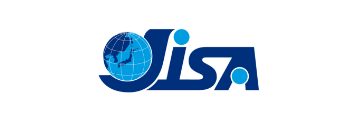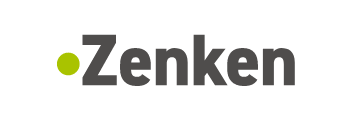Health Insurance
In Japan, health insurance is mandatory since 1961. Everyone staying in Japan on a non-short term visa (“tourist visa”) has to join the nationwide health insurance scheme.
There are seven types of medical insurance for different types of people, mostly based on occupation. Out of those, the two most relevant are:
- Employee Health Insurance (健康保険, kenkō hoken): For full-time company employees
- National Health Insurance (国民健康保険, kokumin kenkō hoken): For self-employed residents, students, part-time workers, and people without a job
Employee Health Insurance
If you are a full-time company employee, your company will handle virtually everything health insurance-related for you. In most cases, you won’t have to lift even a single finger to do paperwork.
With employee health insurance, your insurance fees are deducted directly from your monthly salary. Premiums are adjusted each year and vary depending on the region you’re living in and your monthly income. You can find an overview of current insurance premiums on this page of the Japan Health Insurance Association.
Health insurance premiums are split half-and-half between employer and employee. For example, if you make 280,000 JPY per month, the full premium would be 27,552 JPY. However, because your employer pays half of it, only 13,776 JPY would be deducted from your salary.*
*Numbers based on 2021 data for Tokyo prefecture.
National Health Insurance
If you are not a company employee, you apply for National Health Insurance (NHI) when registering at your local city office.
NHI premiums are calculated based on your previous year’s income and the number of people in your household. Because of this arrangement, payments for the first year are usually lower than for those for subsequent years.
In contrast to Employee Health Insurance, you have the responsibility to pay NHI fees yourself. Make sure to not miss a deadline!
Payment options depend on the area you live in, but usually include bank transfer, credit card, or payment slips. Payment slips are sent by mail and can be processed at the city office (and branch offices), banks, post offices, and convenience stores.
Except for payments, you have to notify your city office in the following cases:
- You’re moving out of the city you currently live in, or Japan altogether (in this case, terminate your NHI membership when de-registering at the city office)
- You change addresses within your city
- You’re enrolling in another form of health insurance (e.g. after being hired as a full-time employee)
- The head of household changes, a child is born, or a family member enrolled in the NHI dies
As with other city office notifications, you have to make the notifications within 14 days either before or after the change occurs.
Health Insurance Coverage
Health Insurance in Japan covers 70% of necessary medical treatment (regardless of the type you’re enrolled in). This includes:
- Consultation fees
- Medicine prescribed by the doctor
- Fees for medical treatment or surgery
- Hospitalization costs
The remaining 30% are paid by yourself at the doctor’s office, at the pharmacy or after returning from hospital or another medical treatment facility.
Medical treatment is deemed necessary in the presence of a situation or ailment that prevents the patient from participating in everyday life (illnesses, accidents, childbirth, etc).
For everything else, you have to cover the fees entirely on your own. Not covered by standard health insurance are:
- Work-related accidents (Covered under another type of insurance, see below)
- Accidents that occur during your commute to and from work (Covered under another type of insurance, see below)
- Routine health checkups and physical examinations
- Massages, acupuncture and other treatment aimed at relieving fatigue and discomfort of everyday life (e.g. non-chronic stiff neck)
- Special hospitalization costs exceeding necessary treatment
- Preventive measures (e.g. vaccines)
- Beauty treatments (e.g. plastic surgery)
- High-level medical treatment
Some of the treatments listed above are often provided by companies as benefits for their employees (e.g. preventive flu vaccination, basic yearly health checkup).
Work-Related Accidents
Work-related accidents are covered by Worker’s Accident Compensation Insurance (労働者災害補償保険, rōdōsha saigai hoshō hoken). Work-related accidents include those that occur during an employee’s commute to and from work.
Unlike regular health insurance, worker’s accident insurance fees are covered by the employer 100%. Compensation for missed business days, among others, is higher when an injury or accident is work-related.
Every company in Japan with at least one employee is legally required to provide Worker’s Accident Insurance. Premiums vary depending on the type of work the employees is doing (for example, premiums are higher for construction workers than for office staff).
Going to the Doctor
Doctor’s offices are called 病院 (byōin, hospital), 医院 (i-in, doctor’s office) or クリニック (kurinikku, clinic) in Japanese. These words are usually accompanied by the doctor’s name or the area the clinic is located in.
It many languages, the word “hospital” is associated with larger facilities that you only go to in serious situations. However, the Japanese word for hospital (病院, byōin) also covers small clinics. So don’t get confused when a coworker recommends that you go to the hospital because of a cold or some headache.
In Japan, you can freely choose and switch between doctors (you don’t have to register with a “household/family doctor”). Doctors usually charge a fee for the first medical examination (初診料, shoshin-ryō). This fee is not particularly high, but you can still save by sticking to one clinic.
If possible, contact the clinic and schedule an appointment a few days in advance. In most cases, you will still be able to get treatment when showing up unannounced – just be prepared to wait a bit longer.
After seeing you, the doctor will send you to the reception, where you pay the fees related to the examination itself (e.g. the first medical examination fee). If you were prescribed medication, you take a paper slip from the receptionist, which you use to buy the medicine with in a nearby pharmarcy.
Emergencies and Going to the Hospital
In the case of a medical emergency, call the number 119 for an ambulance.
Calling an ambulance in Japan is 100% free. You will not have to pay any associated costs. When the situation is serious, don’t hesitate to take action. However, the number of ambulances available in any given area is limited. Depending on the situation, you should consider alternative options (walking to a nearby clinic, taxi, etc.)
If you’re not sure whether you should call an ambulance or head to a hospital immediately, you can also call the number #7119 (First-Aid Relief Center). You will be given assistance over the phone to help with the decision. This service is currently only fully available in the following prefectures:
- Tokyo
- Saitama
- Ibaraki
- Miyagi
- Niigata
- Osaka
- Kyoto
- Nara
- Tottori
- Tokushima
- Yamaguchi
- Fukuoka
For all other cases except for emergencies, go to your local clinic first. They will do pre-hospitalization checkup and make the arrangements for you. Hospitals are open to patients without referrals, but they can charge an extra fee (between 2,000 and 5,000 JPY) for patients that were not referred to them.
When hospitalization ends, most hospitals will ask you to pay your fees on the day you check out (you will be delivered a payment slip that you can pay for at specialized terminals or desks within the hospital). Commonly accepted payment methods are credit card, debit card, bank transaction or cash. It’s usually not possible to combine multiple payment options (e.g. debit card and cash).
You can get more information about medical care in Japan from this site: Guidebook on Living and Working ~For foreign nationals who start living in Japan~




